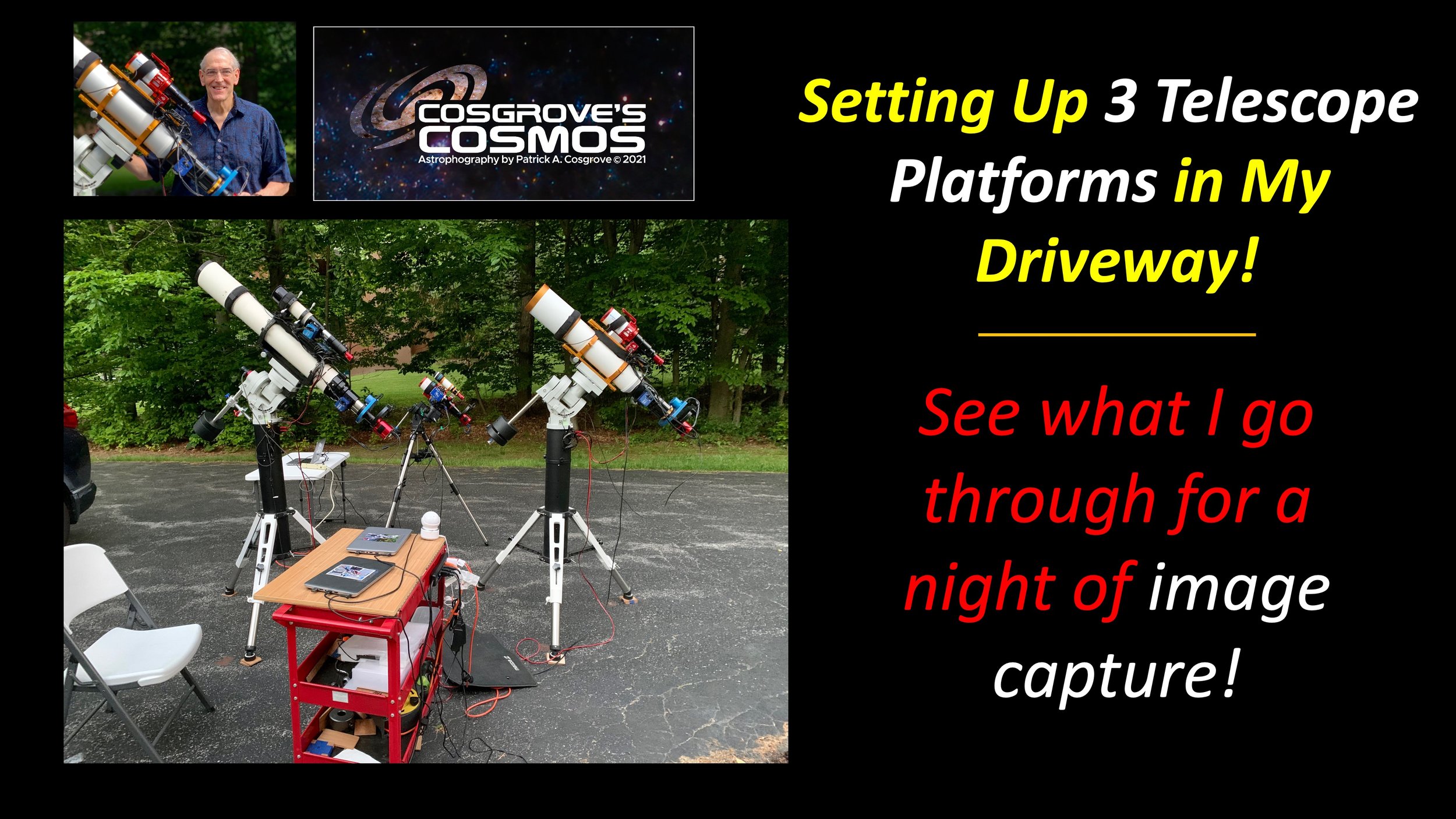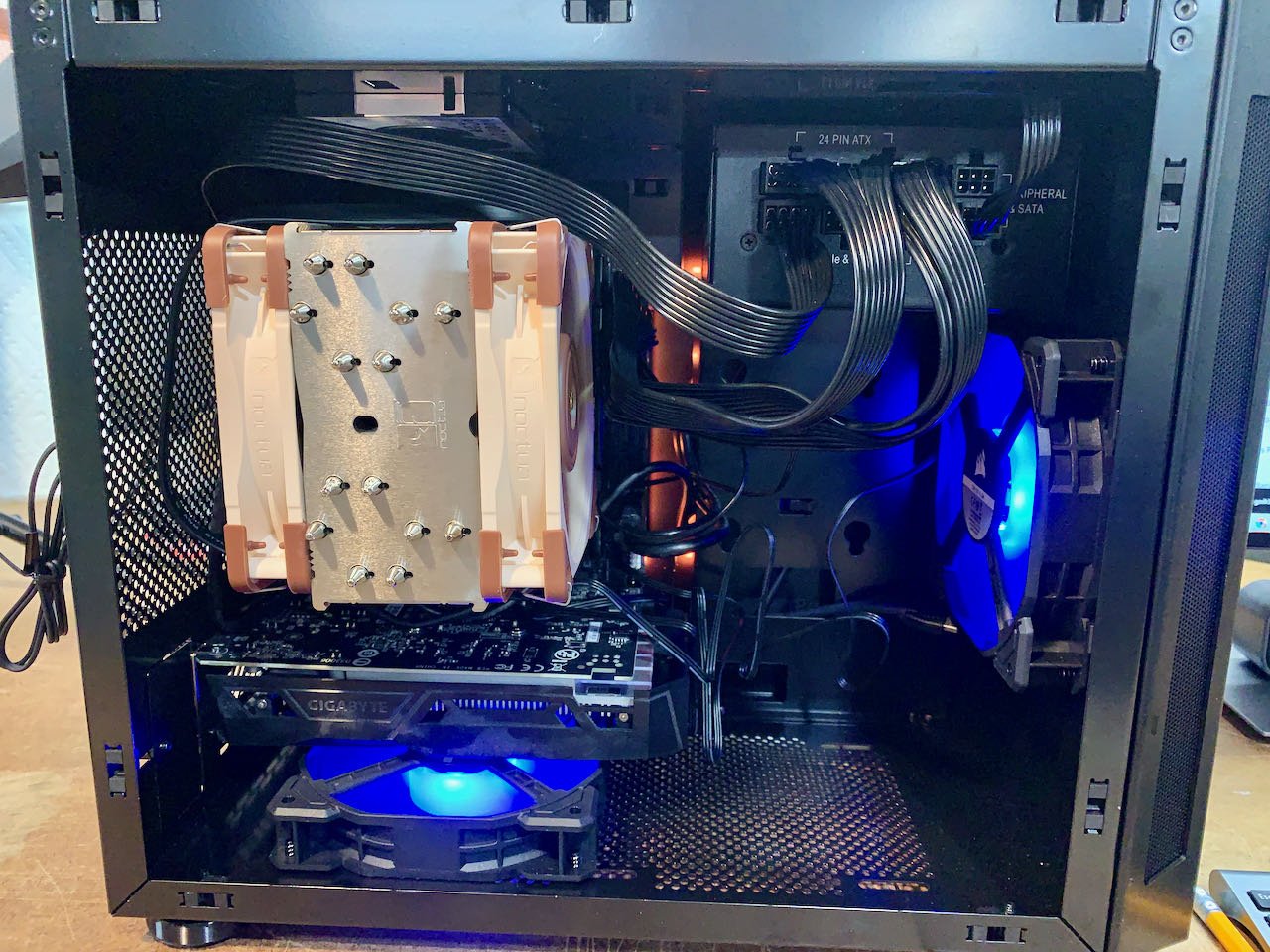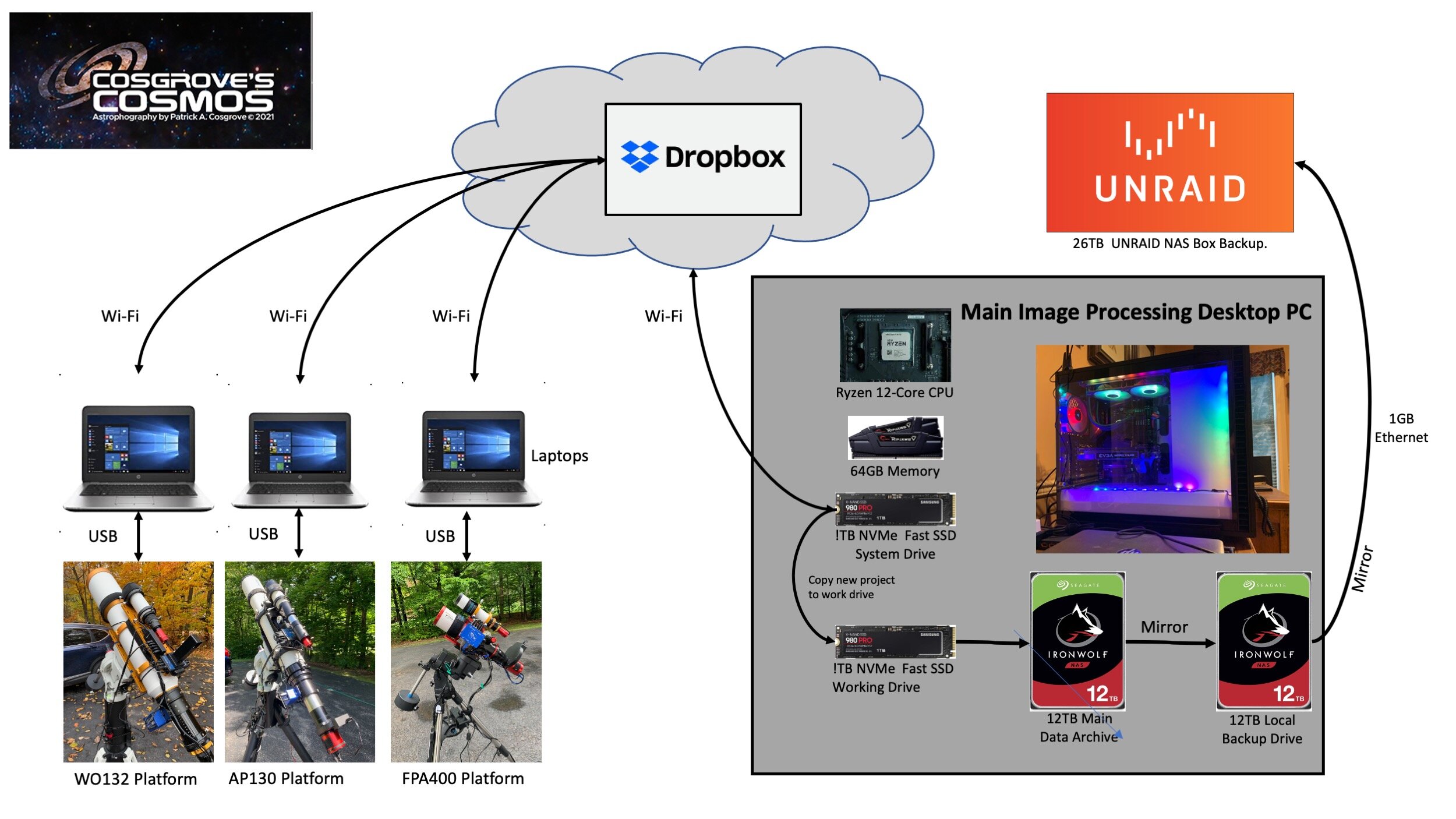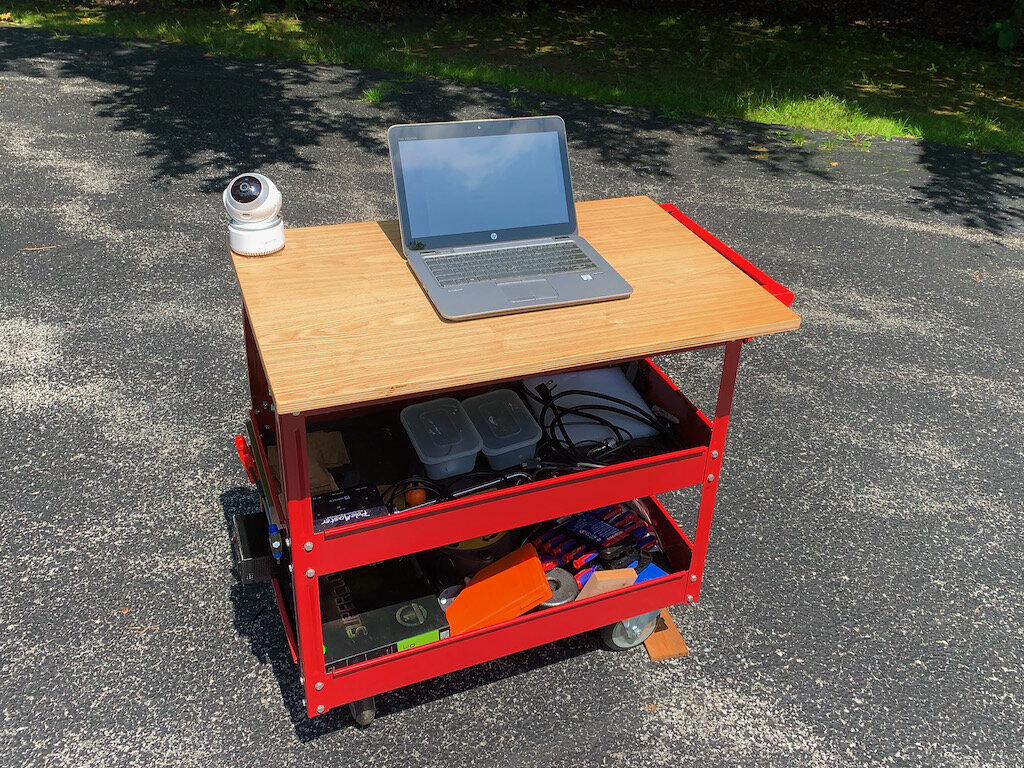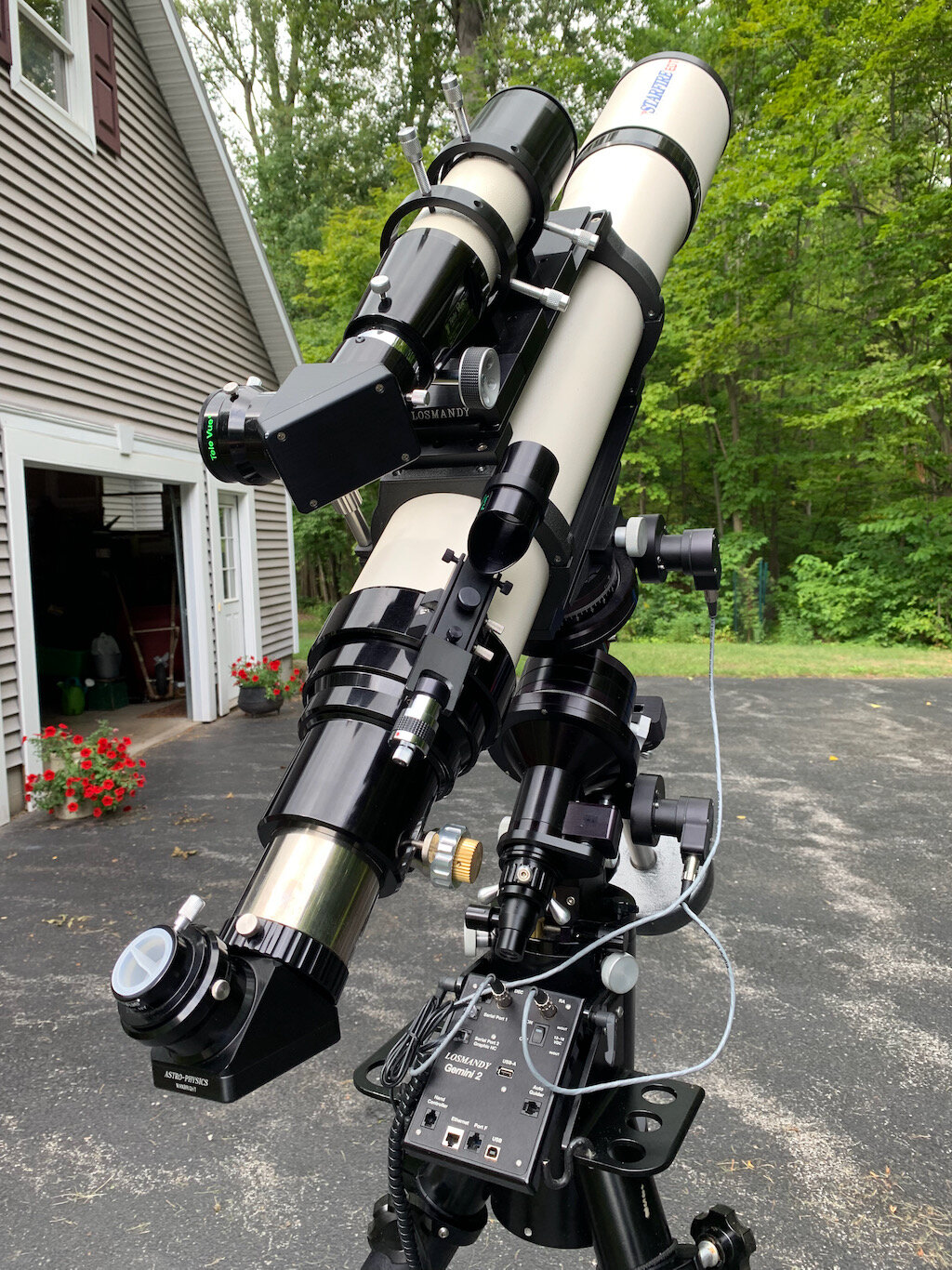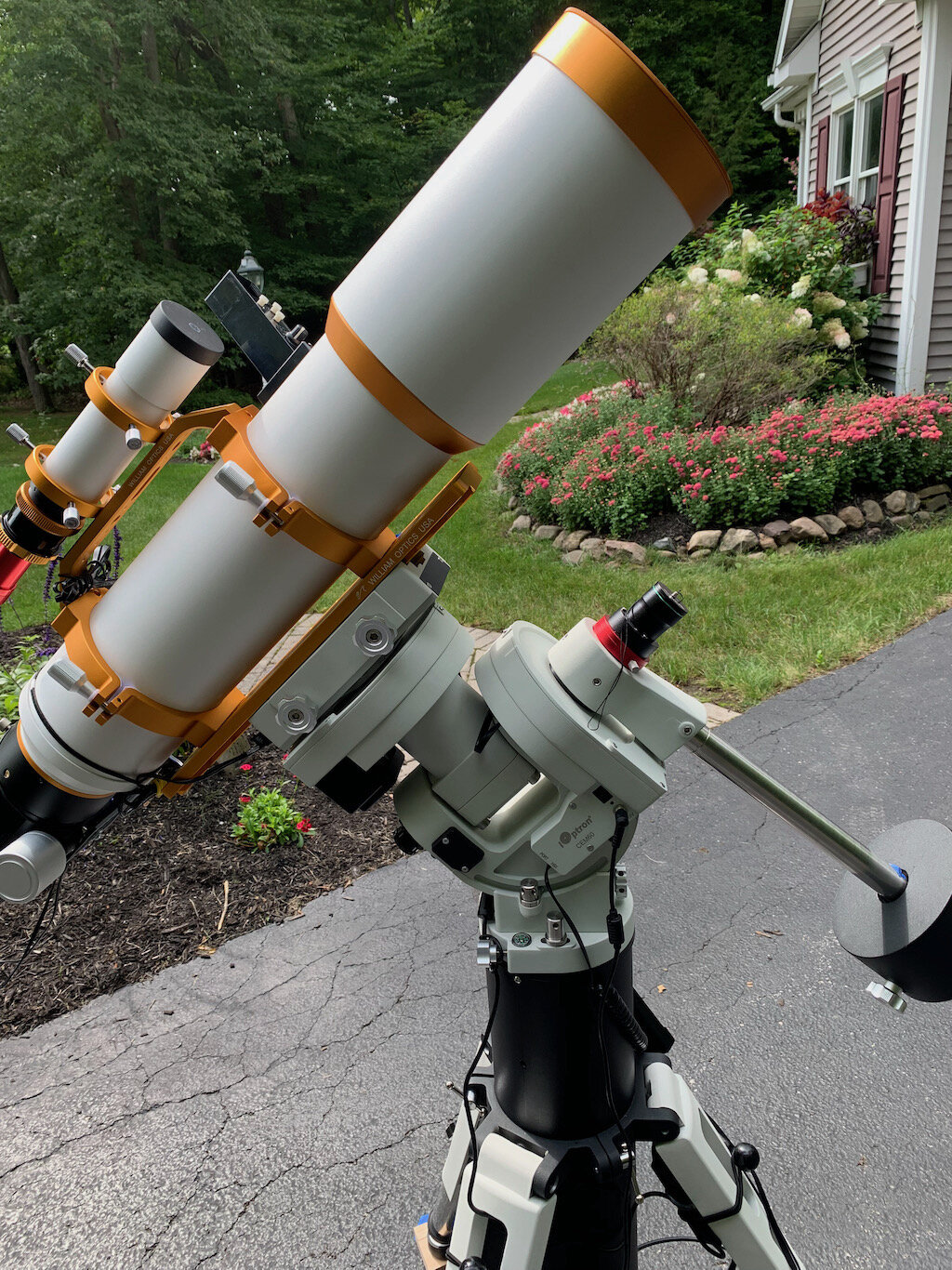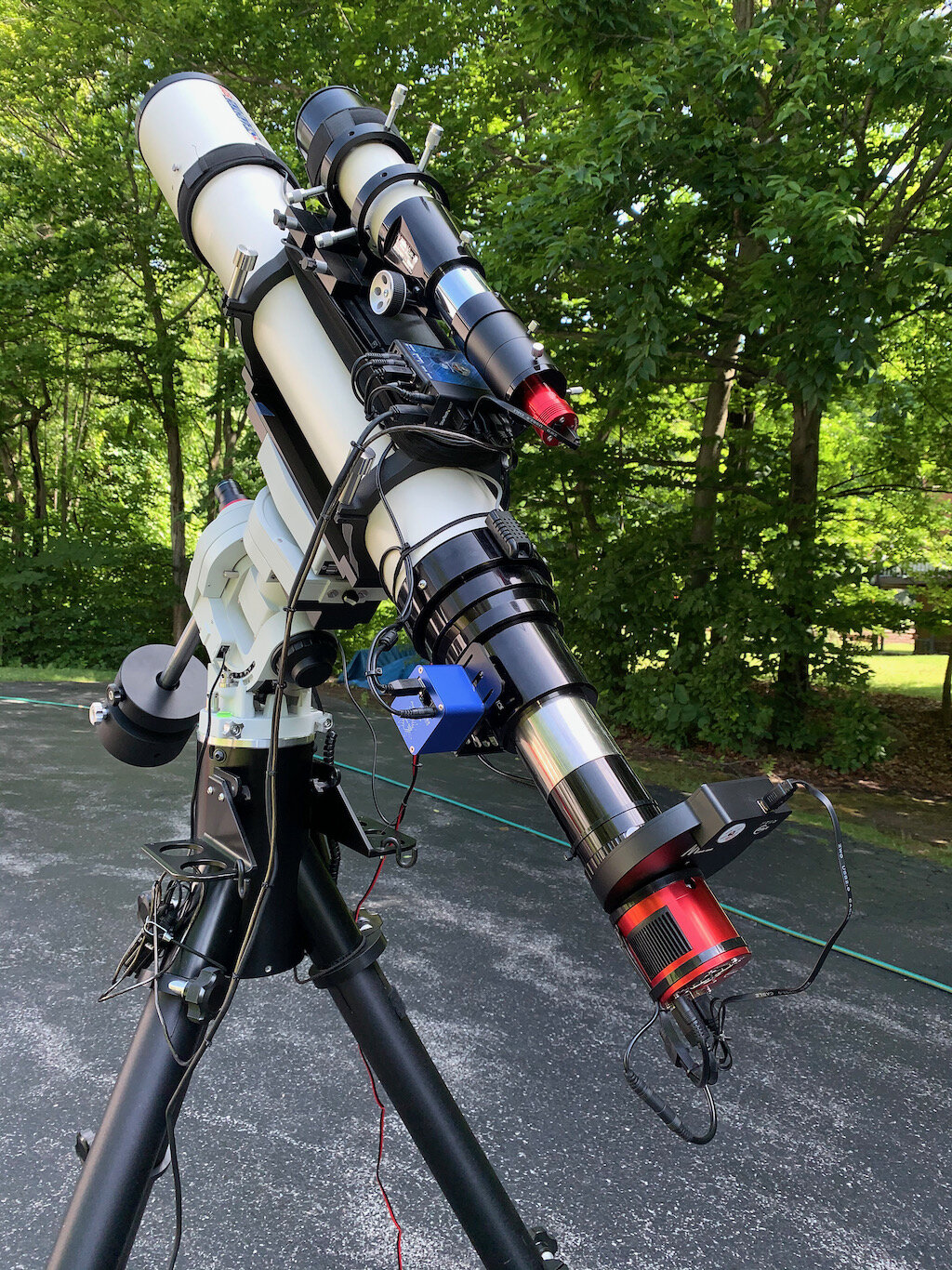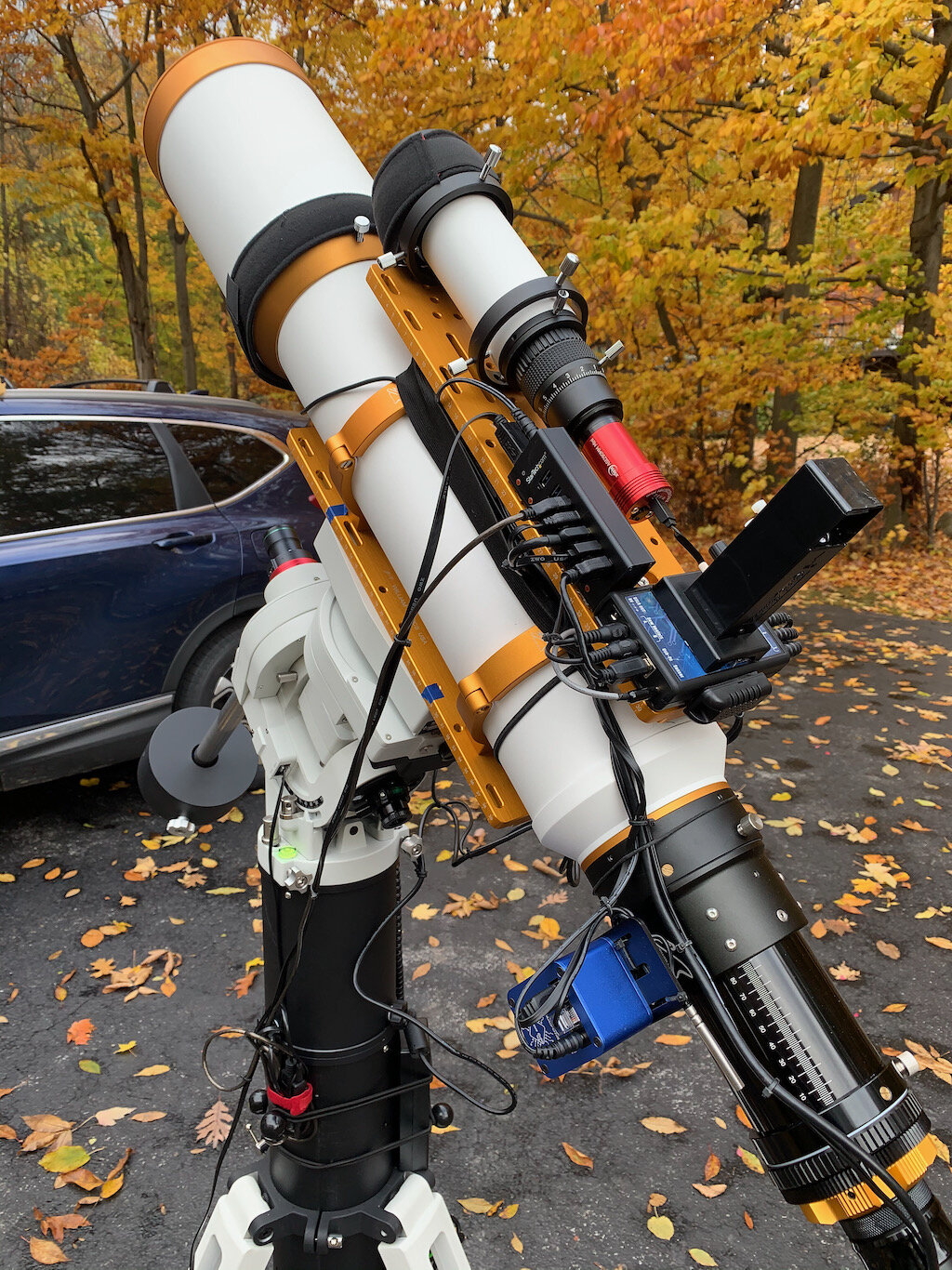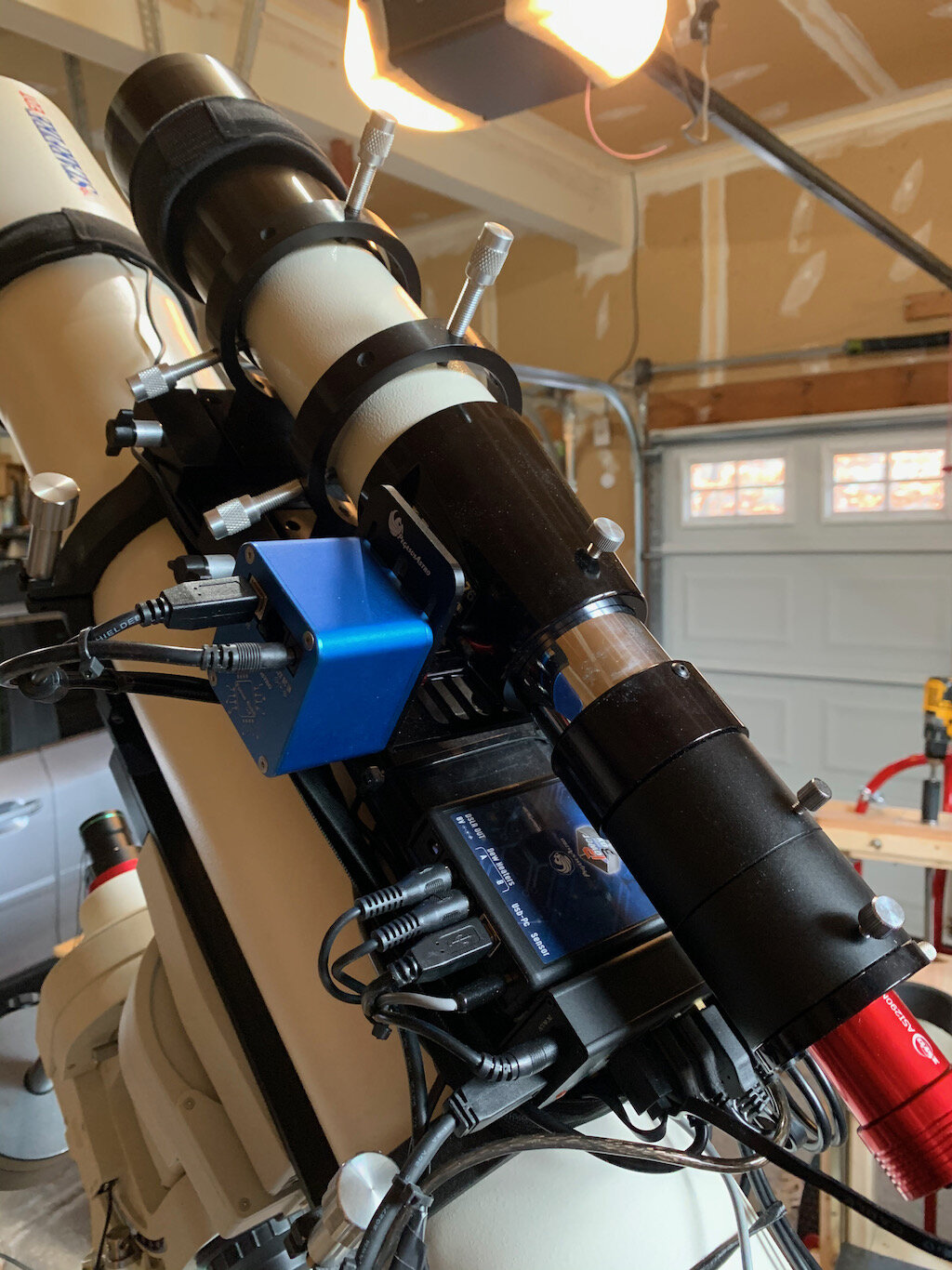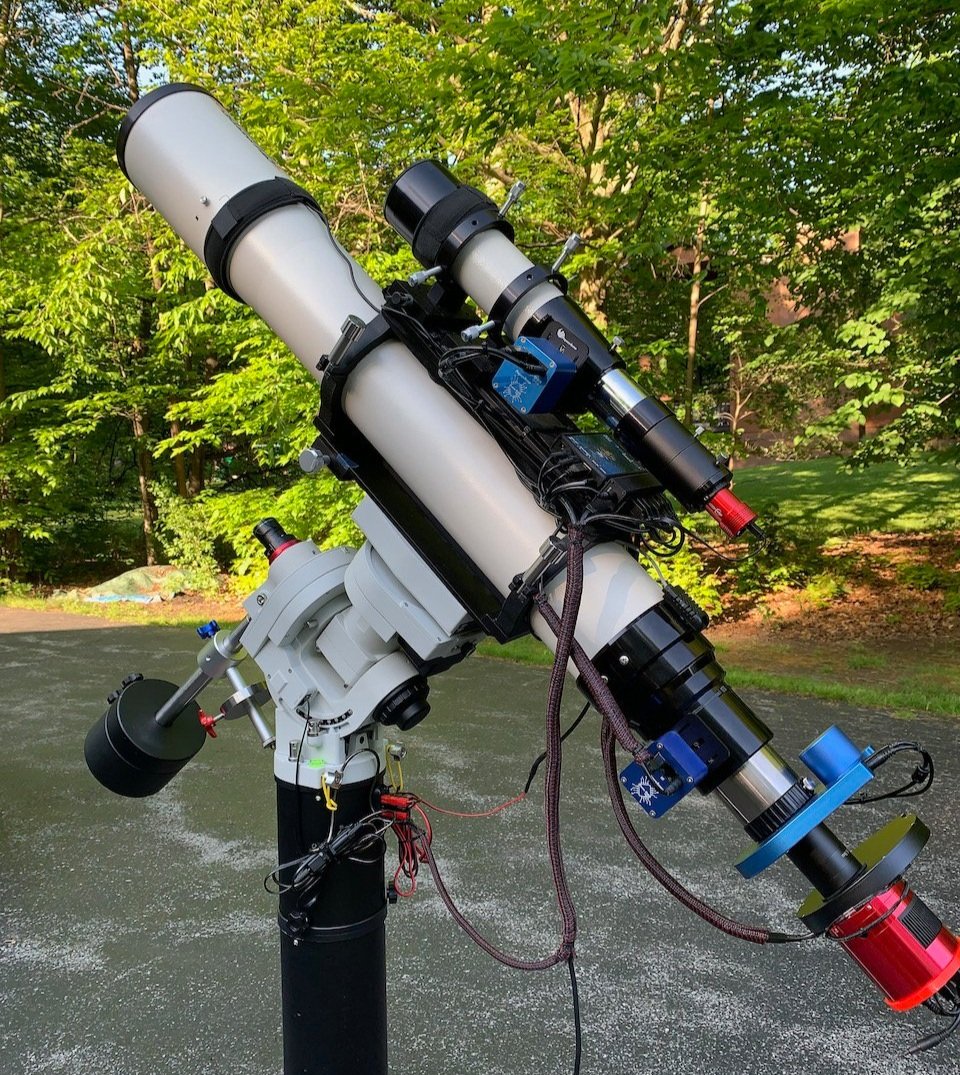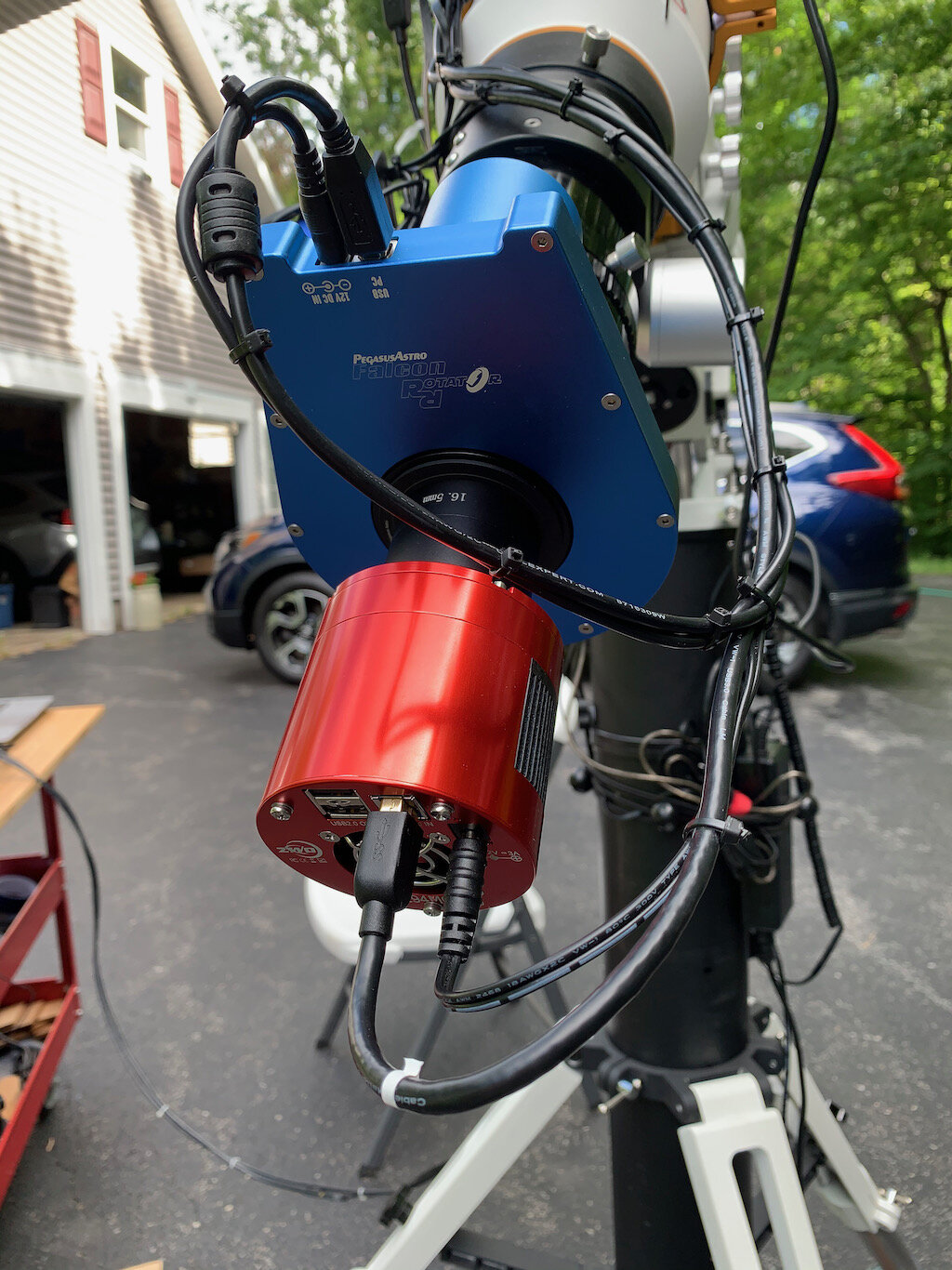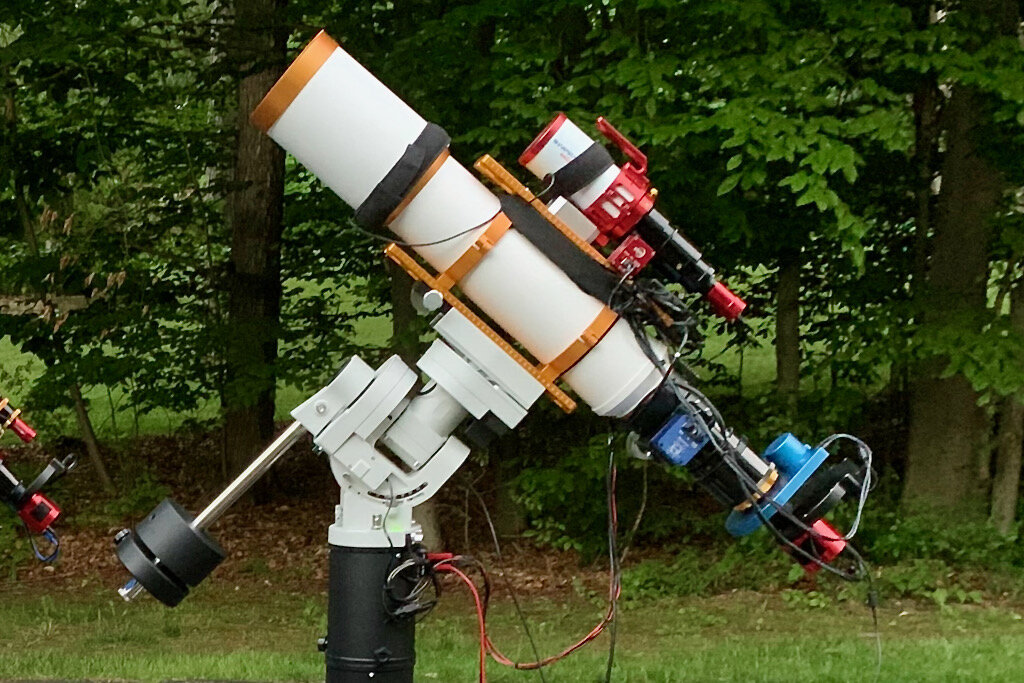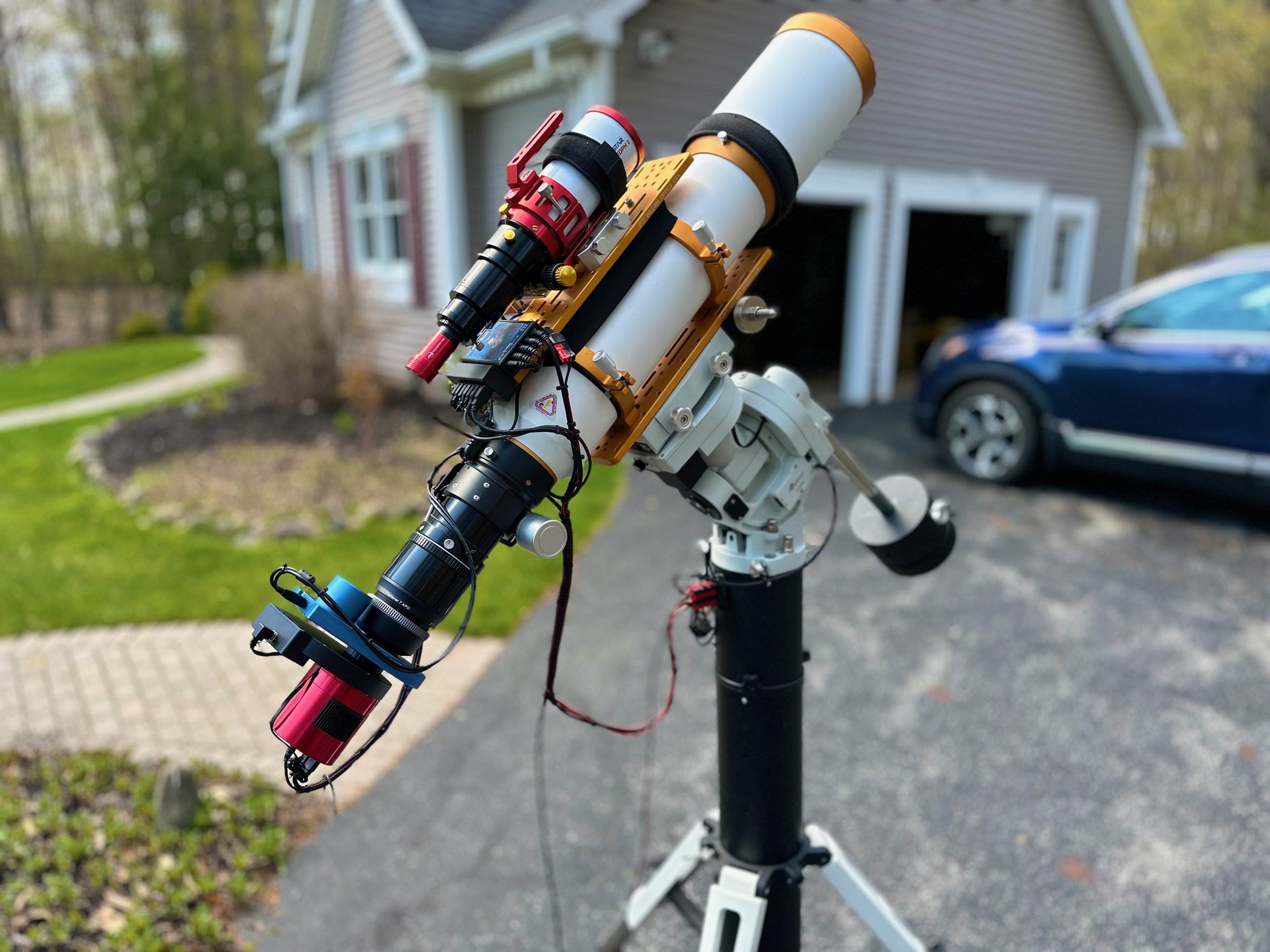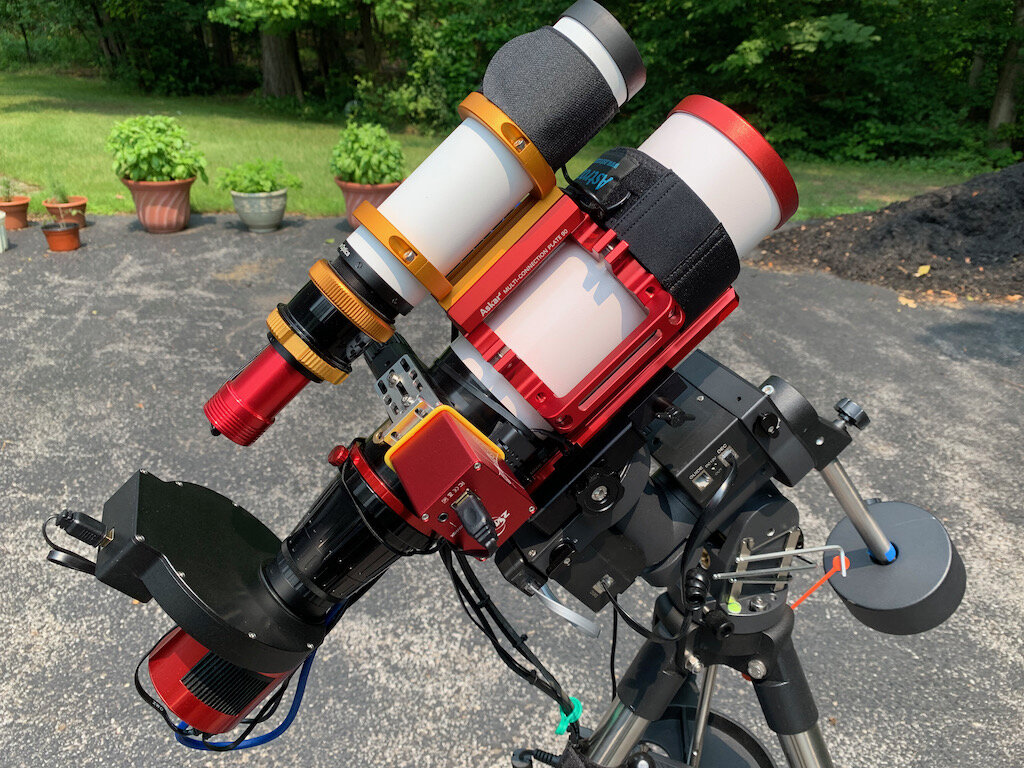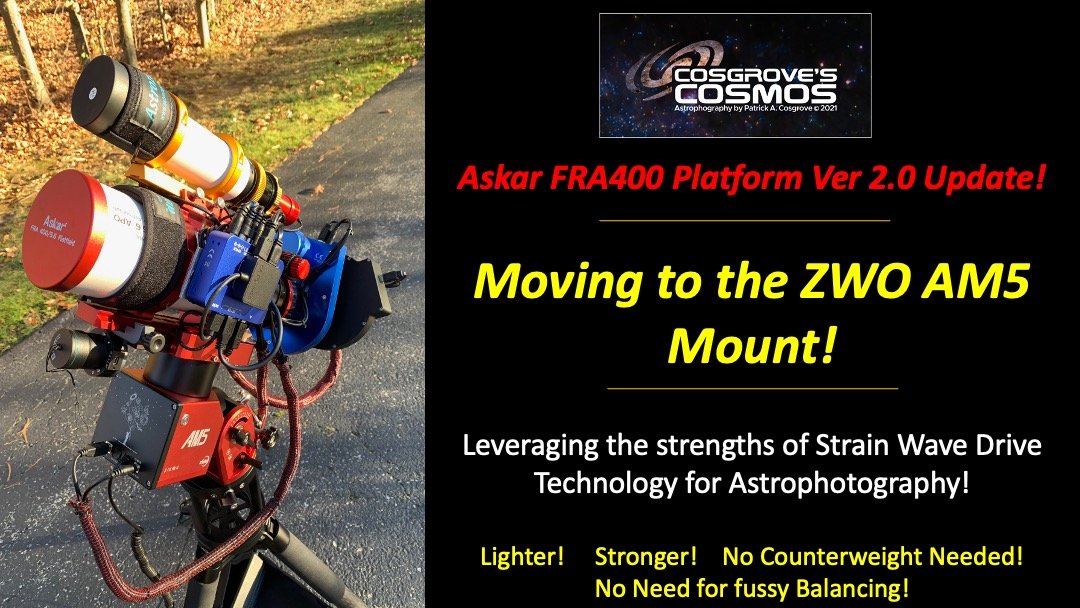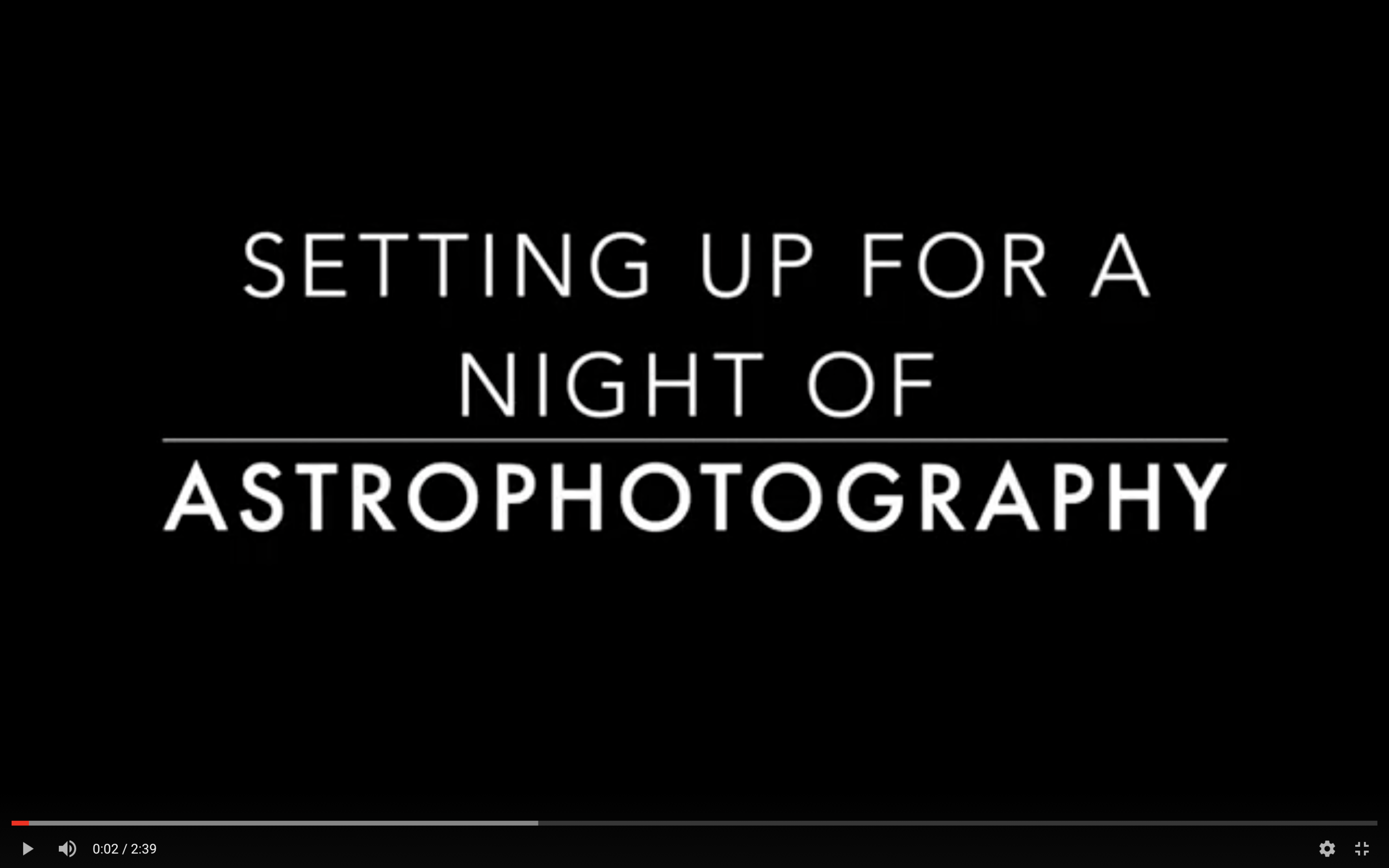All Gear Posts
In order to “do” astrophotography, you can’t get around the need for gear!
On this page I will document the Telescope Rigs that I use to capture my images. One thing to keep in mind is that these rigs are NEVER static. They change and evolve over time. I will try to document those changes here. This has a few practical goals. First - it will document what state the rig was in when a given set of images were taken. Second, it will give you a feel for how things evolved as I progressed on this journey. Finally, it may give you ideas for your own rig!
In General, I am running three Telescope Platforms - typically all at the same time - to enable my imaging Projects. The First is the William Optics 132mm Platform. This is based on the first scope I used for imaging. The second platform is the Astro-Physics 130mm Platform. This second platform was unplanned and came about through a unique and fortuitous set of circumstances The third and most recent platform is the Askar FPA400 Platform - which was put together to enable both portable operations and more wide field capability.
The stories of these platform is found in this blog along with other pieces of equipment that greatly facilitate my astrophotographic endeavors.






